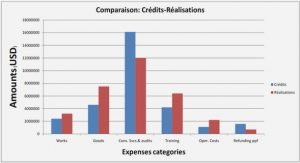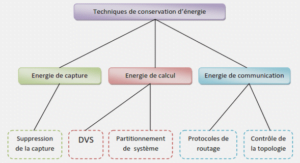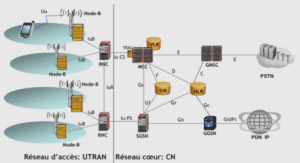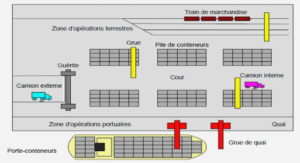APPLICATIVE CONTEXT OF THE LIARA
To understand the applicative context for which this infrastructure was implemented, we have to discuss an important societal transformation that will come with the projected ageing of the population [22]. This transformation is going to have multiple impacts such as an increasing number of persons suffering from a type of dementia such as Alzheimer’s disease [23]. These people suffer a progressive deterioration of their cognitive abilities over a period ranging from three to ten years, causing the loss of their autonomy and hence, their ability to take care for themselves. Therefore, at a certain stage in the evolution of the disease, they must be assisted continuously for the rest of their lives [24]. Not only are these people going to need assistance, but an ageing population may cause a shortage of trained health workers, which will have the effect of causing enormous stress on our already fragile health system. Hence, the LIARA and many other teams believe in the necessity of finding technological solutions to address this complex problem [25].
The evolution of information technology and electronics now makes it possible to envisage different approaches to address this societal transformation. Technological assistance inside a home qualified as smart has positioned itself as a significant trend [6] giving a new hope in the effort to postpone the institutionalization of the elderly. A smart home can be seen as a technologically enhanced environment using sensors (e.g. electromagnetic contacts, motion detectors, touch pad, radio-frequency identification tags, etc.), miniature processors integrated into the objects daily living (fridge, coffee maker, clothing, heating, dishes, etc.) and intelligent software agents communicating with each other in a goal of cooperation in the sense of multi-agent systems [1]. These environments must take decisions while taking care to limit their intrusion in order to help the resident to perform his tasks without invading his privacy. For example, if a stove burner is turned on, the device, or rather the artificial agent associated with it, must have a good idea of the behavior of the occupant as well as the context in which it takes place (preparation of a meal) by communicating with other agents. Also, suppose the agent observes that water is boiling for over an hour due to an oversight by the resident related to his cognitive impairment. Then, it could ask the main system to assist him by sending a vocal or video prompt, or using a more discrete media (light, emoticon, beep, etc.) [26]. The message type must be chosen carefully in order to stimulate the brain reactivity of the individual so that he corrects himself his mistake. When continuous support is provided to a patient with Alzheimer, cognitive degeneration of the disease is slowed and the patient can remain independent longer [27]. The first fundamental step of cognitive assistance inside a smart home is to be able to understand the ongoing Activity of Daily Living (ADL) of the inhabitant in order to identify potential problems that may interfere with the accomplishment of that ADL. This difficulty is, in fact, a special form of a well known problem in artificial intelligence, which is called plan recognition [28]. A plan corresponds to a sequence of elementary step representing a certain ADL. In our application context, the recognition of plans intends to interpret the behavior of a person to provide, timely, appropriate services without being rejected by the individual. It is why a growing community of scientists [29-31], like the UQAC’s team at the Laboratoire d’Intelligence Ambiante pour la Reconnaissance d’Activités (LIARA) [32, 33], are currently working on this specific problem of recognizing ADLs inside a smart home.
ACTIVITY OF DAILY LIVING DEFINITION
Through this thesis, we will often refer to the concept of Activity of Daily Living (ADL) but one could legitimately ask what meaning this is referring to. The notion of ADL has been first described by the Dr. Katz [34] as the set of activities that an individual performs in his routine to take care of himself. That includes activities such as preparing meals, getting dressed, toileting himself, etc. Healthcare professionals often evaluate the level of autonomy (functional status) of an impaired person with the capacity or incapacity to perform a certain ADLs. This metric is useful in assessing the degree of cognitive degeneration of a patient and to successfully discern the type of support he will need [35]. That is why many cognitive tests are based on ADLs performance such as the Kitchen Task Assessment [36] and the Naturalistic Action Test [37]. To summarize, the ADLs is a set of common activities that a normal person is supposed to be able to realize to be qualified as autonomous. Today, a consensus from researchers distinguishes two different types of ADLs:
Basic ADLs (BADLs): The basic activities of daily living (BADLs) are the set of activities that are fundamental and mandatory to answer primary needs of a person. Moving around without assistive device (ambulation), going to the bathroom, self-feeding, functional transfers (getting onto or off the bed), etc. These activities are composed of only a few steps and do not require real planning.
Instrumental ADLs (IADLs): This kind of activity needs basic planning to be performed and implies objects manipulations. These activities are needed to live alone and to live in society. For a person, being able to realize all instrumental ADLs translate into being relatively autonomous. That category includes activities such as: preparing a meal, managing money, shopping, using a phone to call someone, etc. IADLs are more complex, are composed of a higher number of steps and require better planning than basic ADLs.
In the scientific literature on assisting technology inside smart homes [38, 39], researchers mostly use ADLs without distinguishing the specific type. However, most of the time assistive systems in smart home focus on recognizing and assisting instrumental ADLs. The main reason is that a person that cannot accomplish successfully basic ADLs will need more comprehensive care that smart home assistance is inappropriate to provide.
DEFINING ACTIVITY RECOGNITION
Human intelligence is amazing in many facets. A good example comes from the fact that we use perceived information from the observation of a pair to deduce the action plan and the intended goal of other humans we come in contact to. That formidable ability allows us to anticipate the needs of others and therefore, promotes collaboration and assistance. From that fact, artificial intelligence has worked long on this problem that was firstly renowned as the plan recognition problem [28]. The first definition that we can find in the literature comes from Schmidt [40]. In his work, he defines plan recognition as “…to take as input a sequence of actions performed by an actor and to infer the goal pursued by the actor and also organize the action sequence in terms of a plan structure”. In that definition, we can deduce that to perform the plan recognition, we suppose the existence of a plan structure (sequence of action organized in time and space) planned by the observed entity (in our case an Alzheimer resident). That structure constitutes the result that the observer tries to recognize (in our case, the smart home’s sensors are the senses of the observer agent, and the algorithm is its brain).
That vision of the plan recognition problem is inherited from the first expert systems that were created to solve planning problem [41]. The problem of planning an activity is also a well-known challenge of the AI scientific community[3]. We can consider it as the opposite of the activity recognition problem. The difficulty resides in the identification of an actions sequence (a plan of activity) by an agent who will allow it to attain a certain objective at the end of its execution [42]. By opposition, activity recognition implies an observed agent that does not know the initial goal of the other agent (the observed entity), and that intends to deduce the objective by inferring from observed actions the possible structure of the ongoing plan.
Activity Recognition Inside Smart Environments
Since the original definitions from AI problems, activity recognition has evolved, getting improved by many notable authors such as [32, 43, 44]. Each has tried to adapt it to the very specific context of activity recognition inside a smart home. The trend has been to refine the notion of ambient environment to formally link it with the challenge of the activity recognition problem. For example, Goldman [45] describes it as the process of inferring an agent’s plan from the observation of his action. The main distinction from previous definitions is the differentiation between the action of the observed entity, and the observation perceived by the observer. That distinction reflects the fact that actions are not directly observable in smart home context. Patterson [46] has proposed to upgrade the definition by specifying how the observations are made: “…observation made from data from low-level sensors”. This new definition adheres to the paradigm of pervasive computing [5] and is much closer to the reality of the problem. It encourages the creation of enhanced environments where common objects will embed multi-modal sensors to remain less intrusive as possible. It also distances the problem of activity recognition from the legacy algorithms that considered we had access to the basic action executed by the observed entity. It is, in fact, not realistic in our context. The definition of Patterson, in contrast, assumes that only the indices triggered by actions are observable (change in the position of objects, change in the state of a sensor, etc.).
|
Table des matières
CHAPTER 1 – INTRODUCTION
1.1 THE ERA OF DATA
1.1.1 MAINS CHALLENGES RELATED TO BIG DATA
1.1.2 DATA MINING
1.2 APPLICATIVE CONTEXT OF THE LIARA
1.2.1 ACTIVITY OF DAILY LIVING DEFINITION
1.2.2 DEFINING ACTIVITY RECOGNITION
1.3 ACTIVITY DISCOVERY FROM BIG DATA WAREHOUSE
1.3.1 RELATED WORK ON DATA MINING FOR SMART HOMES
1.3.2 SPATIAL DATA MINING AND ACTIVITY RECOGNITION
1.4 CONTRIBUTIONS OF THIS THESIS
1.5 RESEARCH METHODOLOGY
1.6 THESIS ORGANIZATION
CHAPTER 2 – CLASSICAL APPROACHES TO ACTIVITY RECOGNITION
2.1 INTRODUCTION TO ACTIVITY RECOGNITION
2.1.1 ACTIVITY RECOGNITION IN SMART HOME
2.1.2 MAIN STEPS OF ACTIVITY RECOGNITION IN SMART HOME
2.2 LOGICAL ACTIVITY RECOGNITION APPROACHES
2.2.1 KAUTZ’S FORMAL THEORY FOR PLAN RECOGNITION
2.2.2 EXTENDED WORK ON LOGICAL APPROACHES
2.2.3 ASSESSMENT OF LOGICAL APPROACHES
2.3 PROBABILISTIC ACTIVITY RECOGNITION APPROACHES
2.3.1 BAYESIAN APPROACH OF CHARNIAK
2.3.2 MARKOVIAN APPROACH
2.3.3 FINAL WORD ON PROBABILISTIC APPROACHES
2.4 SPATIAL ACTIVITY RECOGNITION APPROACHES
2.4.1 RIMER SYSTEM
2.4.2 CHEMOTACTIC MODEL
2.4.3 OUR PREVIOUS MODEL USING TOPOLOGY
2.4.4 ASSESSMENT OF SPATIAL ACTIVITY RECOGNITION
2.5 CHAPTER CONCLUSION
CHAPTER 3 – RELATED WORK ON DATA MINING
3.1 INTRODUCTION TO DATA MINING
3.2 DECISIONS TREES
3.2.1 ID3
3.2.2 C4.5
3.2.3 STANKOVSKI, DECISION TREE FOR SMART HOME
3.2.4 ASSESSMENT OF DECISION TREES FOR AR
3.3 ASSOCIATION RULES MINING
3.3.1 APRIORI
3.3.2 GENERALIZED SEQUENTIAL PATTERN
3.3.3 JAKKULA & COOK, RULES MINING FOR SH
3.3.4 ASSESSMENT OF THE ASSOCIATION RULES MINING APPROACHES
3.4 CLUSTERING
3.4.1 K-MEANS
3.4.2 ASSESSMENT OF THE CLUSTERING APPROACHES FOR AR
3.5 SPATIAL DATA MINING
3.5.1 DENSITY BASED CLUSTERING
3.5.2 MOVING CLUSTERING
3.5.3 ASSESSMENT OF THE SPATIAL DATA MINING
3.6 CHAPTER CONCLUSION
CHAPTER 4 – SMART HOME PRIMERS
4.1 WHAT IS A SMART HOME
4.2 HOW TO SELECT HARDWARE
4.2.1 ENERGY EFFICIENCY
4.2.2 PERCEPTION OF THE RESIDENT ABOUT SENSORS
4.2.3 DESCRIPTION OF THE MAIN TYPES OF SENSORS
4.2.4 CENTRALIZED OR DECENTRALIZED PROCESSING
4.2.5 CHOOSING THE RIGHT EFFECTORS
4.3 IMPORTANT CONSIDERATION FOR SOFTWARE
4.3.1 CALCULATION COMPLEXITY
4.3.2 HUMAN CENTRIC DESIGN
4.4 THE LIARA’S SMART HOME
4.4.1 HARDWARE ARCHITECTURE
4.4.2 SENSORS AND EFFECTORS
4.4.3 SOFTWARE
4.5 SPATIAL DATA MINING MODEL
4.4.4 ILLUSTRATION OF THE COMPLETE SPATIAL DATA MINING
4.6 CHAPTER CONCLUSION
CHAPTER 5 – EXPLOITING PASSIVE RFID TECHNOLOGY
5.1 PASSIVE RFID TECHNOLOGY
5.2 CHALLENGES RELATED TO LOCALIZATION
5.2.1 RELATED WORK ON LOCALIZATION
5.3 IMPROVING THE BASIC INFORMATION GATHERING
5.3.1 ITERATION BASED FILTER
5.3.2 ADDRESSING THE VARIATION OF RSSI
5.4 TRILATERATION WITH RSSI
5.4.1 ELLIPTIC TRILATERATION
5.4.2 NON-INTERSECTING PROBLEM
5.4.3 SELECTION OF THE FINAL POSITION
5.5 IMPLEMENTATION AT THE LIARA
5.5.1 SOFTWARE IMPLEMENTATION
5.6 VALIDATION
5.6.1 RESULTS AND ANALYSIS
5.6.2 TESTS WITH VARIOUS TYPE OF OBJECTS
5.7 CHAPTER CONCLUSION
CHAPTER 6 – GESTURE RECOGNITION
6.1 GESTURE RECOGNITION
6.2 LITERATURE ON GESTURE RECOGNITION
6.2.1 CLASSICAL GESTURE RECOGNITION
6.2.2 GESTURE RECOGNITION WITH RFID
6.3 CHALLENGES OF GESTURE RECOGNITION
6.3.1 SEGMENTATION
6.3.2 LIMITING THE DIRECTIONS
6.4 THE NEW GESTURE RECOGNITION METHOD
6.4.1 BASIS OF THE ALGORITHM
6.4.2 PERFORMING A LINEAR REGRESSION
6.4.3 THE CORRELATION COEFFICIENT
6.4.4 ATOMIC GESTURE IDENTIFICATION
6.4.5 COMPOSITE GESTURE IDENTIFICATION
6.5 IMPLEMENTATION AND VALIDATION
6.5.1 EXPERIMENTS WITH A SIMULATOR
6.5.2 VALIDATION WITH HUMAN IN THE SMART HOME
CONCLUSION
![]() Télécharger le rapport complet
Télécharger le rapport complet






